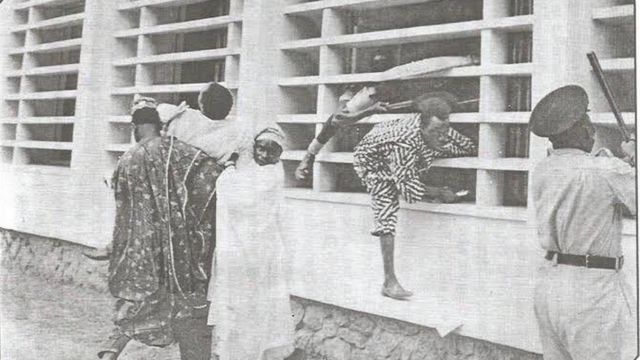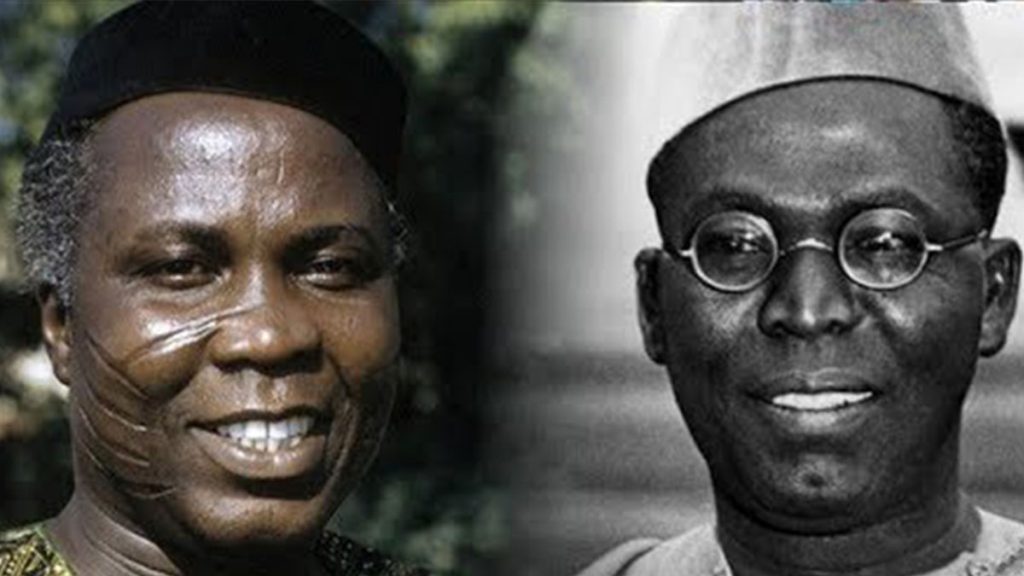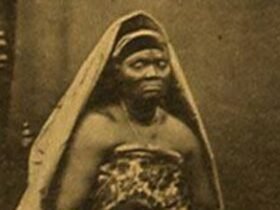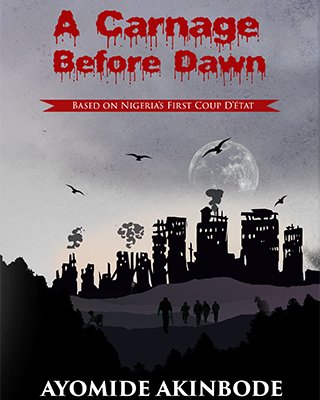No products in the cart.

Nigeria’s First Republic lasted for less than three years until it fell on January 15, 1966, after the country’s first military coup.
This article highlights some of the major events that led to the fall of Nigeria’s First Republic; the coup which signalled its end and, of course, the counter-coup which has been famously described as “Africa’s bloodiest.”
Nigeria’s Independence
No doubt, Nigeria gained its independence from the British on a platter of gold. The country was seen as a model for other African countries which earned it its nickname – Giant of Africa.
Contents
The country boasted of a federal constitution which encouraged self-governance in the three regions at the time – the Northern, Western, and Eastern regions and functioned in a parliamentary democratic fashion that bordered on majority rule while the rights of the minority were adequately protected.

Also, the 1960 constitution which was in the play had an elaborate bill of rights and in comparison to some other African countries that operated on a one-party system upon gaining independence, Nigeria had a practical, regional-based multiparty system.
Then, on October 1, 1963, Nigeria became a republic, exactly three years after its independence from the British.
However, things could not hold at the centre and just two years, three months, and 14 days later, Nigeria’s First Republic fell and the constitution was suspended.
Factors that led to the Fall of Nigeria’s First Republic
There are a thousand and one reasons why Nigeria’s First Republic fell as no singular factor can be pointed out to be the cause or explain what actually went wrong.
The failure or downfall of a government is usually the result of a combination of economic issues, policy actions and so on.

The collapse of Nigeria’s First Republic was a mixture of some underlying factors like the 1914 amalgamation of Nigeria, the breakdown of constitutionalism, federal system pattern, political instability, electoral malpractice, abuse of the rule of law, and even foreign media interference.
In the 1959 federal elections in preparation for independence and Nigeria’s First Republic, the leading parties at the time won a majority of the seats in their respective regions but none of them was considered firm enough to constitute a national government.
This led the NPC and NCNC to form a coalition government. The regional premiers were Ahmadu Bello in the North, Michael Okpara in the East and Ladoke Akintola in the West.
Hence, Nigeria’s First Republic was already standing on a shaky foundation as there were a lot of contradictions inherent in the 1960 Constitution that resulted in a breakdown of law and order.
Some of these contradictions were the non-clarity of the powers the President had either over or with the Prime Minister, the federal system which had its basis on component regions and the political system that was adopted in line with foreign power interests.
The British imposition of a parliamentary system of government for Nigeria and the national population census of 1963 also led to the collapse of Nigeria’s First Republic. The census in itself was a step in the right direction but it became the backdrop of political instability as the result of the census was accompanied by controversy with each region accusing the others of inflating their figures.

The enumeration exercise which began on May 13, 1962, was done not just to help the Federal Government of Nigeria’s First Republic accurately assign seats in the parliament but also to provide the basis for the distribution of federal revenue and even give a viable reason for the creation of a new region.
Ibrahim Waziri, who was the Minister for economic development at the time, accused the Eastern Region of inflating their figures. Also, the late submission by the Western Region prompted the Minister to order a repeat of the exercise in the region. All these fanned the flames of underlying discord among the regions.
Thus, was the birth of a fierce battle among the regions to have the highest figures in order to have more seats in the parliament and also be given a large portion in resource allocation. The Southerners rejected the census results which led to its cancellation in 1962 and a fresh census was done in 1963.

The 1963 census was later officially acknowledged, after a prolonged legal tussle by the NCNC, and the Northern Region emerged with the highest population figures.
Another factor that led to the eventual collapse of Nigeria’s First Republic was the creation of the Mid-West Region from the Western Region. This was seen as a move by the federal government to weaken the West and diminish the influence of the ruling party in the region – the Action Group. This new creation increased the distrust among the regions.
The crisis during the 1964 general elections was another contributing factor to how Nigeria’s First Republic fell.
Massive rigging was the order of the day while the political parties traded accusations and rejected results that were not in their favour. This put a dent in the credibility of the government formed in the background of such an election and set off a chain reaction of events which paved the way for the downfall of Nigeria’s First Republic.

Amidst the back-and-forth accusations and counter-accusations of hooliganism by political parties during election campaigns, there were widespread riots and demonstrations resulting in the deaths of a lot of persons, injuries and destruction of goods and properties.
The Northern People’s Congress, NPC, and Nigerian National Democratic Party, NNDP, formed a coalition party named the Nigerian National Alliance, NNA, while the National Convention of Nigerian Citizens, NCNC, and the Action Group, AG, formed their own coalition known as the United Progressive Grand Alliance, UPGA.
These two regional parties intimidated one another during election campaigns and for fear of not winning the elections, the UPGA even requested that the Army be allowed to conduct the elections. The cracks in the unity and stability of the country widened.
Leadership in Nigeria’s First Republic
As a young, independent nation, Nigeria’s First Republic needed a strong, effective and dynamic leader to pilot her to greatness. What the nation had, however, were a majority of political players who lacked the foresight to make Nigeria an envy of other nations.
The politicians were engrossed in corruption and nepotism, and could not properly address burning issues like ethnicity, development, and national integration in the country. Rather, discord between regions was allowed to fester which led to violence.

The majority of the blame for the collapse of Nigeria’s First Republic rested on the leaders who were not focused and determined to preserve democracy but were instead interested in acquiring as much power as possible. This was reflected in the unequal development of regions and power tussles among major politicians and their parties.
The excessive domination of the North over its minorities was a major grouse the South had with it.
In the West, internal issues within the Action Group Party culminated in a bloody clash between the Awolowo and Akintola factions, leading to the loss of lives and properties.
On May 29, 1962, Prime Minister Tafawa Balewa declared a state of emergency and the decline of the Action Group started in full force.
The final nail of the Action Group’s coffin was hammered in September 1963 when Obafemi Awolowo, alongside some leaders of his party, was pronounced guilty of treasonable felony and sentenced to 10 years in prison.
The January 15, 1966, Military Coup
Nigeria’s first military coup d’état on January 15, 1966, came on the heels of corruption, political wrangling, the incompetence of the ruling elite, back-and-forth accusations of electoral fraud, and all-around unrest.
The three main conspirators of the 1966 coup were Majors Chukwuma ‘Kaduna’ Nzeogwu, Emmanuel Ifeajuna and Adewale Ademoyega.
The coup led to the deaths of the Premier of the Northern region, Sir Ahmadu Bello, the Prime Minister, Sir Abubakar Tafawa Balewa, the Premier of the Western Region, Chief Samuel Ladoke Akintola, and the Finance Minister, Chief Festus Okotie-Eboh.
Some, senior military officers of the Nigerian Army were also murdered in cold blood.
The coup plotters had said that their goal was to bring about a temporary revolution to end corruption, nepotism, and ethnic rivalry in the country. But that was not to be, as the coup, instead, exposed Nigeria’s vulnerability as a failed state and showed how easy it was for the military to overthrow the government and Nigeria’s First Republic rather than protect it.
The Fall of Nigeria’s First Republic
With the killing of Nigeria’s top politicians and senior military officers, Nigeria’s First Republic eventually fell when, on January 16, 1966, Major-General Johnson Aguiyi-Ironsi, the head of the army who survived the coup, took over power, banned all political parties, and formed the Supreme Military Council (SMC).
However, Aguiyi-Ironsi would rule for just 194 days as Northern soldiers in the army staged an even deadlier counter-coup that led to the death of the Head of State on July 29, 1966.
On August 1, 1966, the 31-year-old Lieutenant-Colonel Yakubu Gowon then succeeded Aguiyi-Ironsi and assumed power as Nigeria’s second military Head of State. He would go on to rule for nine years until he was overthrown in a bloodless coup on July 29, 1975.

Nigeria would endure military rule for four more years until General Olusegun Obasanjo handed over power to Shehu Shagari as Nigeria’s first executive president to usher in the Second Republic on October 1, 1979.
Like Nigeria’sFirst Republic, Nigeria’s Second Republic also fell on December 31, 1983, after President Shagari was deposed in a military coup. You can check out the full story in our next article.
We always have more stories to tell. So, make sure you are subscribed to our YouTube Channel and have pressed the bell button to receive notifications for interesting historical videos. Also, don’t hesitate to follow us on all our social media handles and to as well share this article with your friends.
Feel free to join our YouTube membership to enjoy awesome perks. More details here…
You can also get A Carnage Before Dawn, a historical account of Nigeria’s first coup d’état. E-book here. Paperback here. And on Amazon Kindle and Amazon Paperback.
Sources
Iloegbunam, C. (2016, July 29). July 29, 1966 Counter-Coup: Africa’s Bloodiest Coup D’état. Vanguard. Retrieved from https://www.vanguardngr.com/2016/07/july-291966-counter-coup-africas-bloodiest-coup-detat/amp/
Muhammad, M. (2014, October). Nigeria’s Tortuous Transition after Independence: The Collapse of the First Republic. Retrieved from A Publication on Issues on Nigerian Peoples and Culture, Kano University of Science and Technology, Wudil. Chapter 7. Ahmadu Bello University Press Limited. Zaria.
Obasi, E. (2018, August 18). Why Zik Escaped Death in 1966. Vanguard. Retrieved from https://www.vanguardngr.com/2018/08/why-zik-escaped-death-in-1966/
Obi-Ani, N. and Obi-Ani, P. (2016, August). January 15, 1966 Coup d’état Reconsidered. Nsukka Journal of the Humanities. Vol. 24(2)
Siollun, M. (2016, January 15). How First Coup Still Haunts Nigeria 50 Years On. BBC. Retrieved from https://www.bbc.com/news/world-africa-35312370.amp
Leave a Reply
You must be logged in to post a comment.








Leave a Reply
View Comments